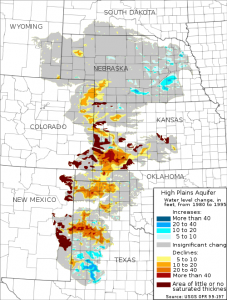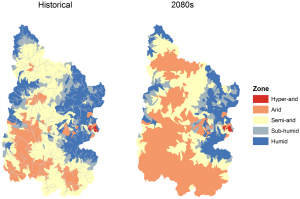I’m thinking I may need to update my tree rings book , or write a new one.
, or write a new one.
Much of my focus was on measurements of tree ring width, which makes sense. If you pick the right tree, the ring width can tell you whether a year was dry or wet. Thin rings mean the tree didn’t have much moisture to work with that year. But a rapidly growing new approach using the isotopic composition of the wood to tell us much, much more.
The technology’s been there for a while to do this, but improvements in isotopic analysis methodology make it possible now to do it with much smaller sample sizes, and much more quickly and economically. Here’s an example, from a research program aimed at reconstructing drought history in the upper Great Plains of North America:
Because old trees are scarce at low elevations in the arid inland western United States, ring-based flow reconstructions in large rivers are usually based on conifer trees in the mountains, where most of the run-off is derived. Such chronologies are important, but incomplete because they do not integrate events and hydrologic processes lower in the watershed. Ongoing work has shown that the dominant riparian tree in the lowland western United States, cottonwood (Populus spp.), is long-lived (as old as 370 years), cross-dates well, and has growth strongly correlated with surface-water flow (Merigliano et al. 2012, Friedman et al. 2012, Edmondson et al. 2013). Cross-dated sets of cottonwood cores from the northern Great Plains are now available for stable isotope analysis and past work in this genus has shown a strong relation between carbon isotope fractionation and drought stress (Leffler and Evans 1999). This presents the possibility of conducting multi-proxy studies using ring widths, stable isotopes, and possibly trace elements and radiogenic isotopes of both low-elevation cottonwoods and high-elevation conifers.
It’d be cool to see this done with cottonwoods here in the Rio Grande Valley. We don’t have 370-year-old cottonwoods, but I’m sure there are things to be learned.




